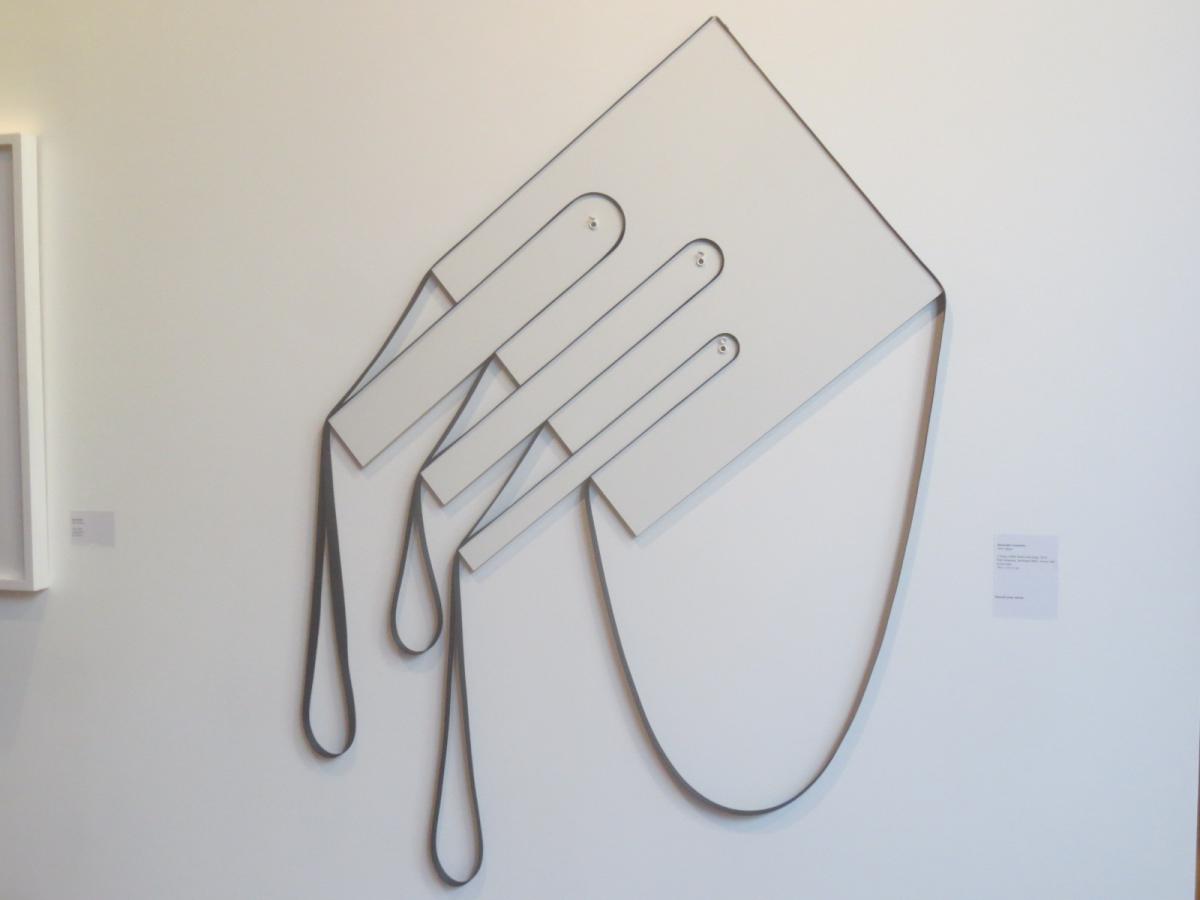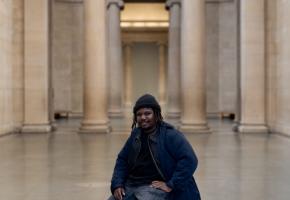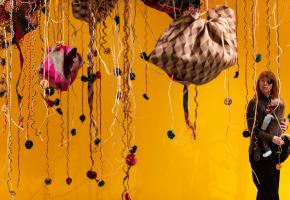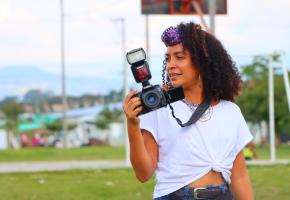The VIA Arts Prize is the only Ibero-American themed visual arts competition in the UK, run by 26 Latin American embassies taking part. Despite the Latin connection, the competition is open to all nationalities, which has led to the rich variety of submitted works, from Russians to Iraqis to Latinos. The only stipulation is that the artist live in the UK and that the submitted work be inspired in some way by Latin America.
The 30 finalist’s works exhibited in the beautiful Sala Brasil included paintings, installations, sculptures, tapestries, kinetic art pieces, textured works, photographs and collages that demonstrated a delightful freshness of approach. The judges struggled to select a winner from this talented group of finalists. The winning piece was sold on the first night and the standard is so high that every visitor has expressed a different favourite!
Paula Rassi, the Brazilian Cultural attaché explains: -
“Personally, I should not say this, but I really love the piece [by Claudia Legge] called Cuban Walls . These are photographs but the colours are deliberately saturated. Together with a high contrast of colour and shapes, they give the piece a sensation of painted textures. These photos have been taken in Cuba and of course, you see the colours of Cuba. At the same time, it is so accomplished in its technique [that] it looks like a painting, reminds me of David Hockney’s ‘The Big Splash’- [without the water this time!] . We were also very glad to see pieces that dealt with Tapestry, installations, 3-dimensional textures and as you see, there is almost a separate section for textiles and now, we have at least three. One of the tapestries ‘Suas verdades podem no ser,’ [literal translation ‘Their truths might not be so’ actual English title ‘Do you want to save the Changes’] is by Brazilian artist Patricia Tavares.
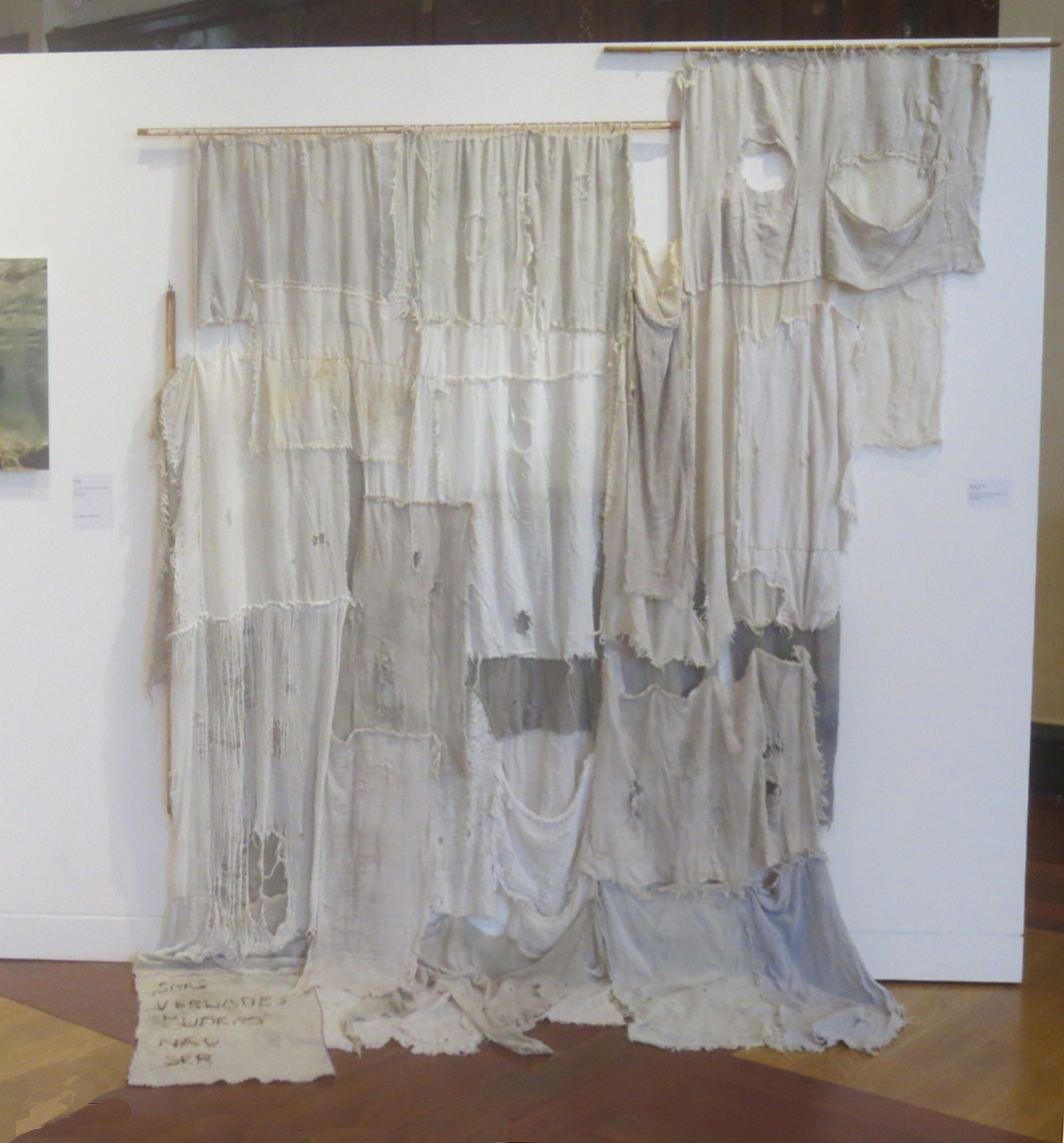 Do You Want to Save the Changes by Patricia Tavares ( Brazil)
Do You Want to Save the Changes by Patricia Tavares ( Brazil)
Fabricated with typical Brazilian cotton rags that are ubiquitous, sold at the traffic lights by kids on the streets in packs of 10 or so. They are fine cotton pieces sewn together to make the most practical and absorbent cloths in the world! These fabrics are used everywhere in Brazil to clean the houses, they are a part of everyday life, they get used till they expire… [although] they last almost forever … Tavares works on reinterpreting her family memories, secrets and stories, from a new contemporary perspective. ‘When I realized it was a woman, I noticed that she was shredded’.”
One unexpected and charming submission is an installation of a Beauty Salon “Salon du Belleza”, created by Anglo-Brazilian Teresa Ribeiro Boulting, titled “Xama: internet at your fingertips”. More accurate than noticed at first sight, as it is in the salons, having your hair and nails done, that the buzz of local life is communicated at all levels.
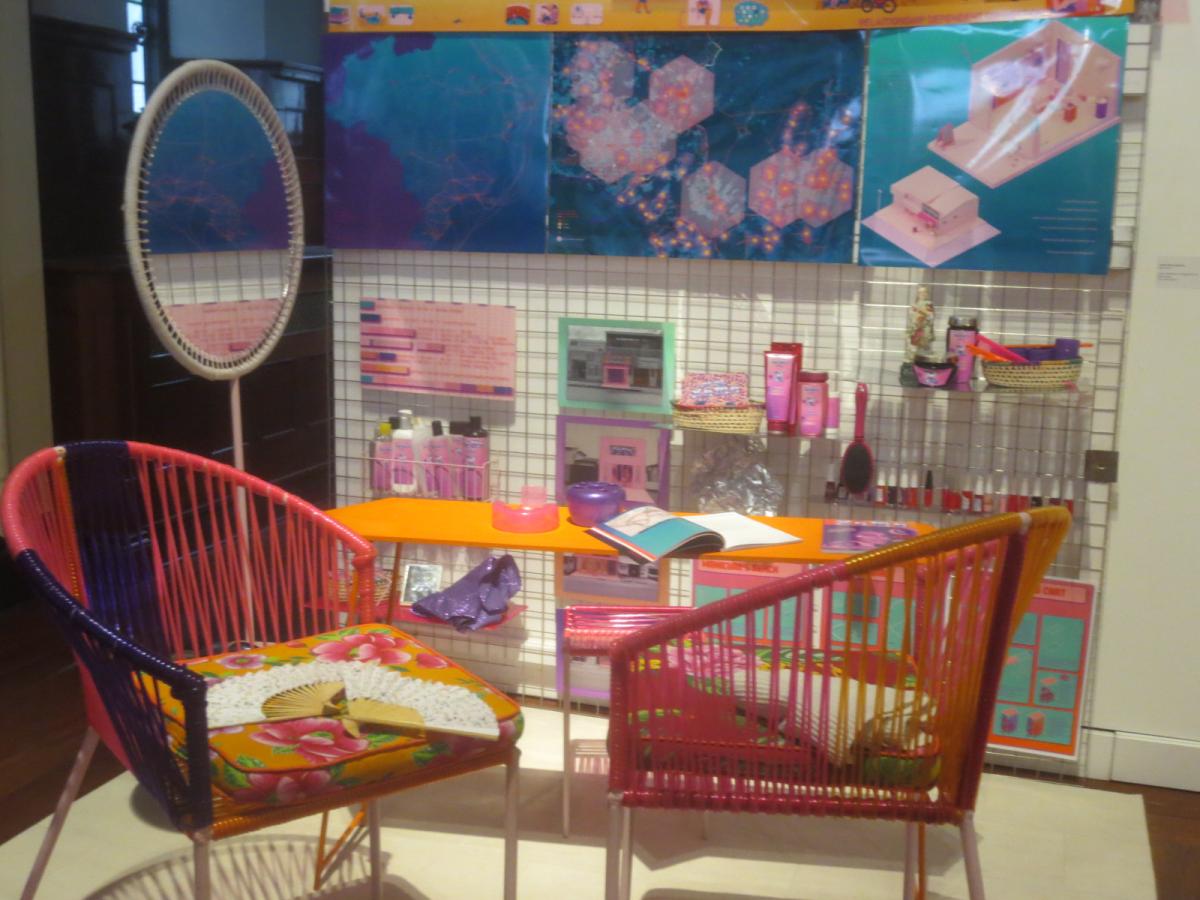
Paul Rassi: -
“[The Salons] are the hubs of social interaction and the best network of information dissemination… a form of human internet networking.”
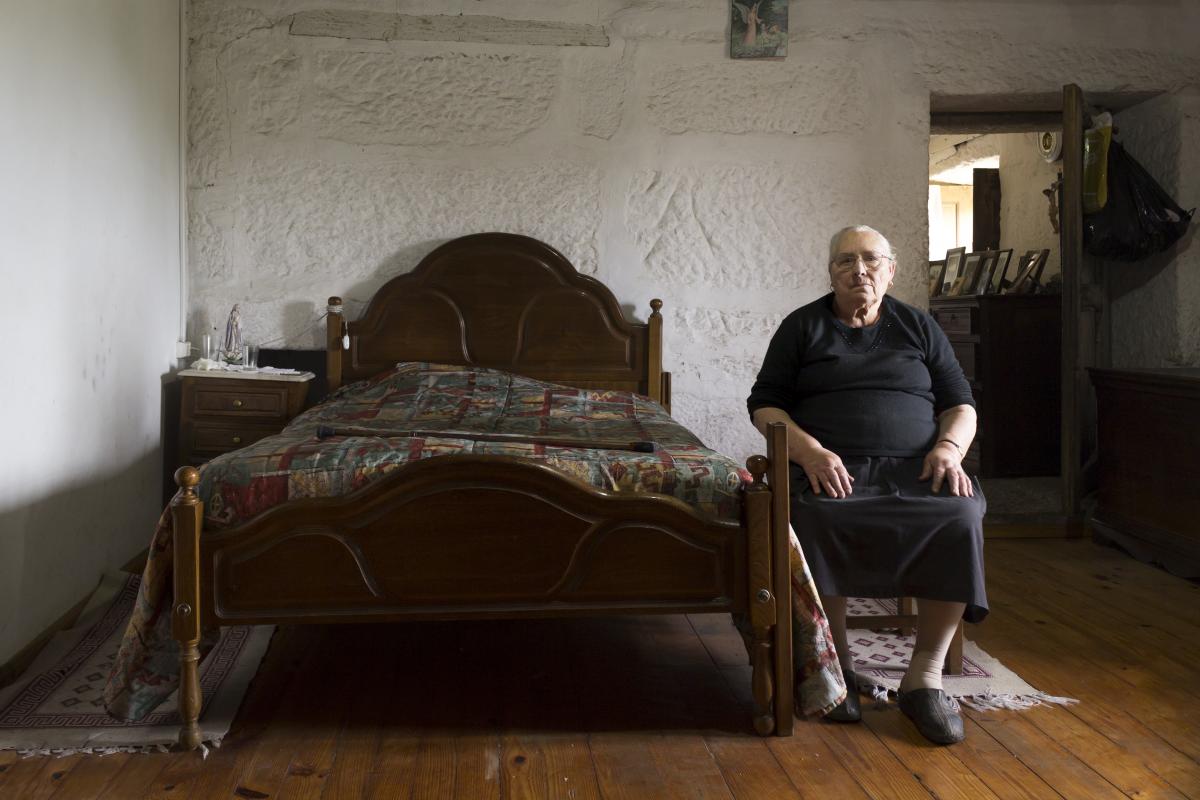
65+ by Sara Lopes (Portugal)
The winner ANTONIO TÁRSIS is largely a self- taught artist, despite having taken some studies at the Museum of Modern Art in Bahia and the Parque Lage School of Visual Arts in Rio de Janeiro. This led to an exhibition at Art Rio. He received the 5th EDP Award of the Tomier Ohtake Institute in São Paulo. After this, he attended the Echoes conferences at the Goethe-Institut in Berlin and was awarded the Akademie Schloss solitude fellowship for 2020 in Stuttgart, Germany. Társis likes to wander the streets collecting material of all kinds which he combines, reproduces, and recontextualizes in his compositions, utilizing photography, collages and installations.
3 Stops, White Board and Strap by Alexandre Canonico ( Brazil)
The runner-up was Brazilian ALEXANDRE CANONICO who presented a sculpture “3 Stops. White Board and Strap”, a minimalist constructivist piece in contrast to the winner’s collage. Canonico, from Pirassununga, São Paulo, Brazil, has been deeply influenced by the Concrete and Neo-concrete art movement that arose in Brazil inspired by architects like Oscar Niemeyer. He uses widely available materials: Steel pipes, rubber, MDF, nails and screws to create a dialogue between spatial representation and the actual physical expression that is within the objects. It comes as no surprise that he studied architecture and town Planning at the Faculdade de Belas Artes in São Paulo, as well as a postgraduate programme at the Royal Academy Schools in London.
The seven judges included a sculptor, Fernando Casasempere, the art gallery director Andrea Harari (Jaggedart) , James Nicolls Chairman of the Maddox Gallery Group, Frances Reynolds , entrepreneur and philanthropist, The art Historian of the Essex Collection of Latin American Art, Dr Sarah Demelo, Sofia Fan , Manager of Visual Art at Itaú Cultural and Vanessa Carlos of the Carlos/Ishikawa Gallery. The judges also chose to also award a special Commendation to the Iraqi artist ESTABRAK whose challenging work is in a different vein as she utilizes photography in an experimental manner, to convey repressed and oppressed issues that struggle to be seen and heard.
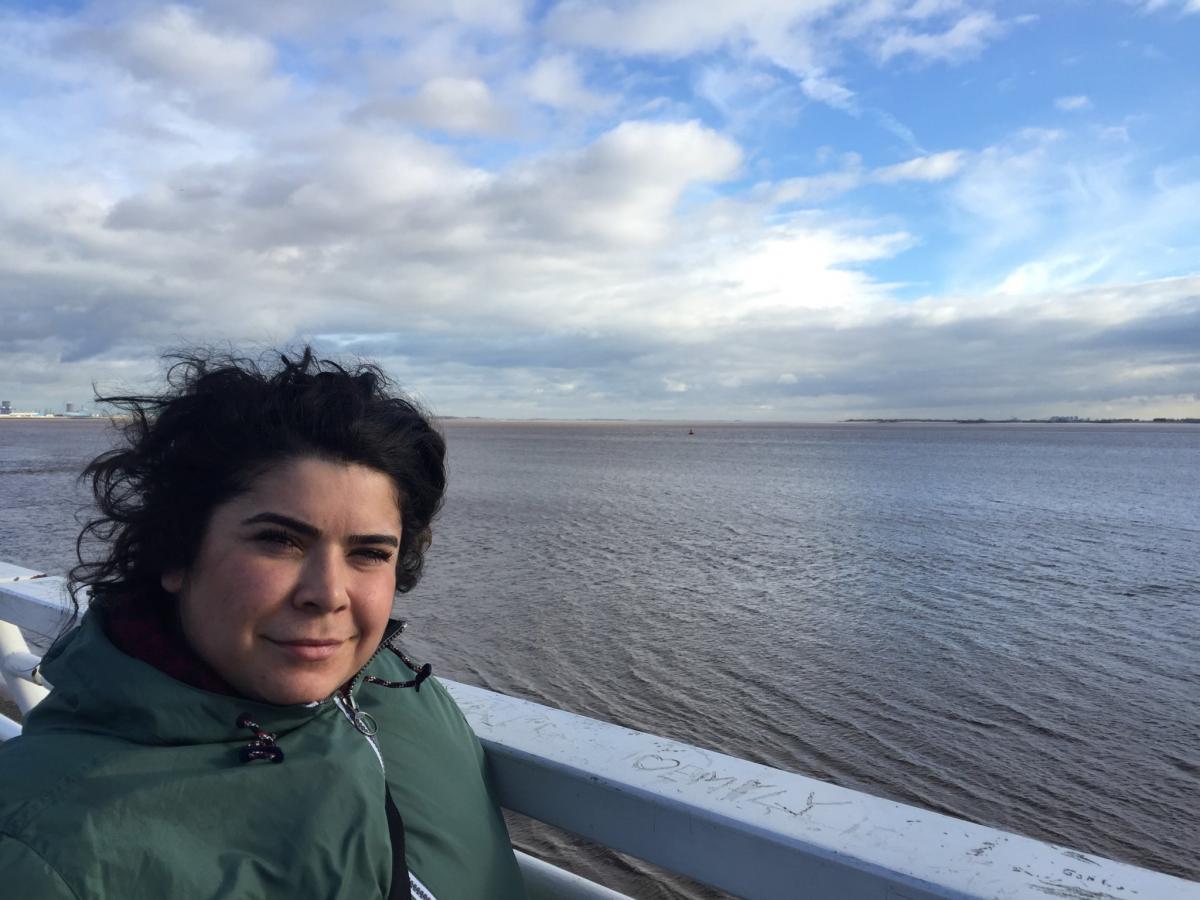
Estabrak close to her beloved water. (Iraq)
In the absence of the winner or the runner up, I was delighted to have the chance to chat with the bubbly, articulate ESTABRAK who was a pleasure to talk to: -
“My name Estábrak is a uni-sex name. It is very rare in the Middle East to have that name firstly and secondly, the meaning is something that I think is really powerful and it could talk about a lot of stuff, so that is why I have a single name… There are a lot of conversations around what surnames mean. For me, it’s a very male dominated existence and tradition, especially within the Middle East. You know, we are carrying our fathers and their fathers. And the father’s father’s histories, and there is nothing wrong with that, but it’s a statement that I am making, as a feminist and as someone that wants a bit of change with regards to the stories that we remember.
I was born in April 1986 in Iraq's capital Baghdad. I am Iraqi in blood and nationality. However, I cannot remember Iraq and I will probably not see it for a few more decades. My family, like many others, were deported from Iraq for political reasons. In the midst of the deportation, my mother and father were split up. A year later, my mother's determination to find her husband and her children led her to find her family in Iran. We moved to London in 1990 and ever since then we have been trying to make our lives better. Unfortunately, my father passed away five years ago. On the night he died I was fast asleep and oblivious to the screaming that went on in the background. I found out about his death in the morning when I woke up. The first time I saw my father dead was in a hospital in Middlesex, wrapped up in a nameless sheet.”
Estabrak has been experimenting with underwater photography for some years. The work that she submitted to the VIA Prize was created during a 3-month stint on the island of Itaparica in the Todos os Santos Bay, around 10 km from the city of Salvador in Bahia. Having lived for some years in Oman, she was struck by cultural differences in the attitude to life and communities: -
“There is a whole point of removing faces, generally. This is the only picture in my whole series of three …that has slight heads in it… all the rest of my images have no faces. For this particular exhibition I have [linked these two images] as one: This one is called ‘Lembra’, which means ‘To Remember’, and this one is called ‘Vida’, which is ‘Life’. Together I have called it ‘VIVER’ which is ‘To Live’… one of the things I really connected with was ‘capoeira’ and what it means on a socio-political level with relation to the conversation about the hidden gem and the hidden meaning of that power. Also, the continuous struggle which is still relevant in Brazil today…Truthfully, in doing my underwater work, one of the things that I felt that has helped to connect people with the stories that are within them, is the fact that when you are removing that face, you are also removing that personal identity, so you are still talking about stories and the realities of the people involved, but you’re not looking at a picture, for example of a black man and maybe disassociating yourself from it… I’m not looking at a white man and disassociating myself from it. We’re looking at bodies and we can all associate with bodies. We are looking at fabrics and we can all associate with that. But the series that I did in Brazil, I have to be honest, was slightly different for me because in reality brown skin represented so much more in that context and there is so much brown skin everywhere you go.
“In Oman, which is a predominantly rich country with a lot of privileges for many different people. [interestingly] their heritage is between Zanzibar and Oman, so they also have a lot of African heritage already, also Asian heritage and at one point the Portuguese also tried to rule them, so there was an instant connectivity between Oman and Brazil in the first place… With this project, I wanted to give you the context to the world that we live in. I looked at things I had never looked at before.
The difference is that technically I was on an island where poverty levels are high, there are a lot of people who are not rich in regards to materialistic things or finance, but they are so rich in regards to their hearts and what they give. These guys take their horses to the sea to wash. The dogs in the streets always have food to eat. Anyone in the street is offered food, there is a community, a neighbourhood experience, where actually you might not have anything, but you have got [eachother].
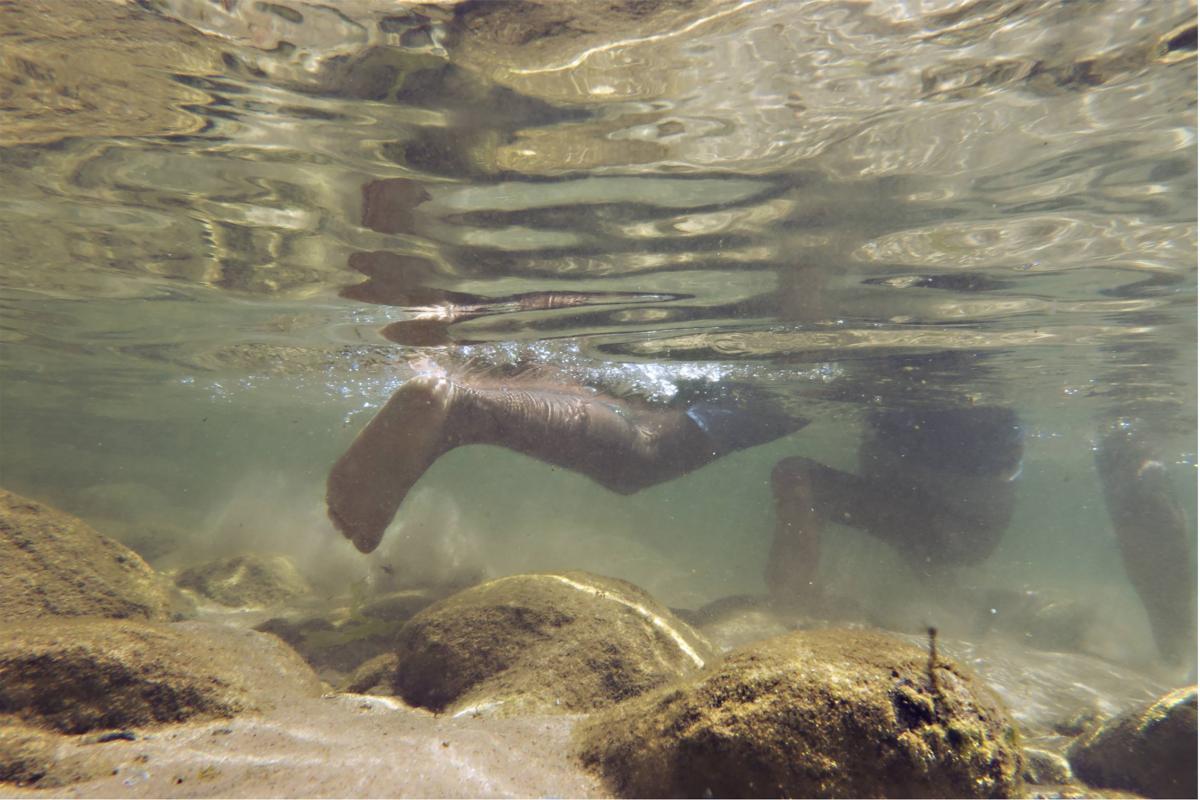
Vida ( Life) Estabrak part of her World Under Water series set in Brazil.
There are beautiful stories about connectivity and coming together, and it is fascinating to understand how African cultures and religions had to be hidden from the view of Europe centred religions in order to exist and survive “.
Estabrak’s work examines stories that have not been allowed to be brought out into the light, hence the interest in the complexities of ‘capoeira’, an Afro-Brazilian martial art rooted in disguise. By turning her camera lens underwater, her series “The World Under Water” (WUW), and previously, “Oman under Water”, Estabrak searches for the hidden, silenced stories that remain submerged, undiscussed and often invisible.
Last year’s award winner Hugo Brazão also displayed an interesting selection of his work, particularly an impressively large panel, “Best Foot Forward”, which, in contrast to his previous soft fabric textiles, is constructed from a large selection of materials including found wood, casting plaster, cement, casting resin, acrylic paint wool and more!
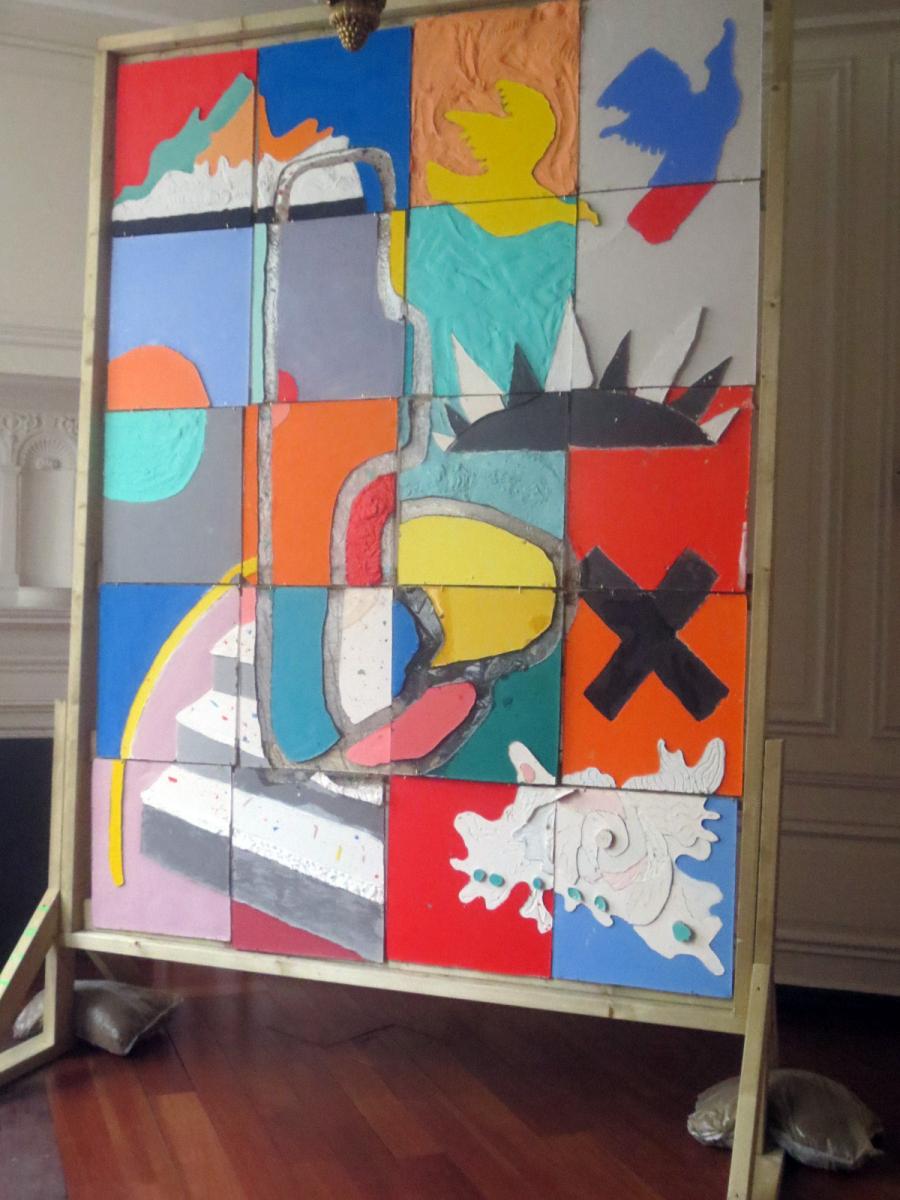
Best Foot Forward by Hugo Brazão (Madeira)
The VIA Prize will soon be requesting submissions for next year. The show takes place at the end of November- beginning of December and the works are exhibited in the historic and very beautiful Sala Brasil of the Brazilian Embassy by Trafalgar Square.
CONTACT INFO for the VIA http://viaartsprize.org
m.me/viaartsprize



